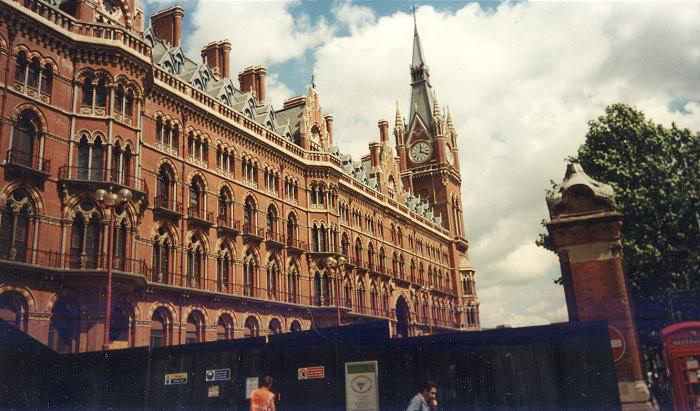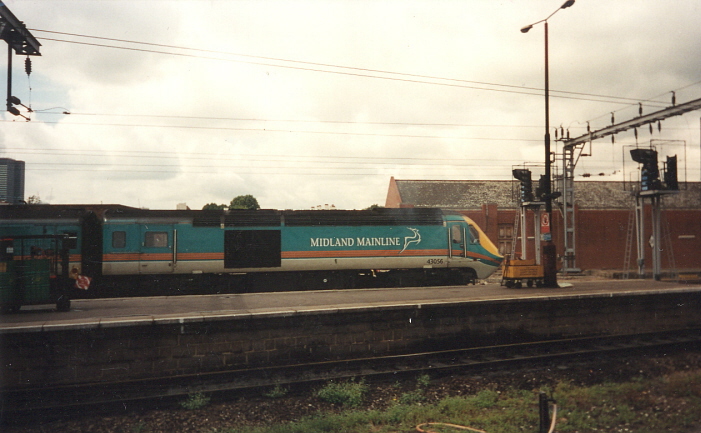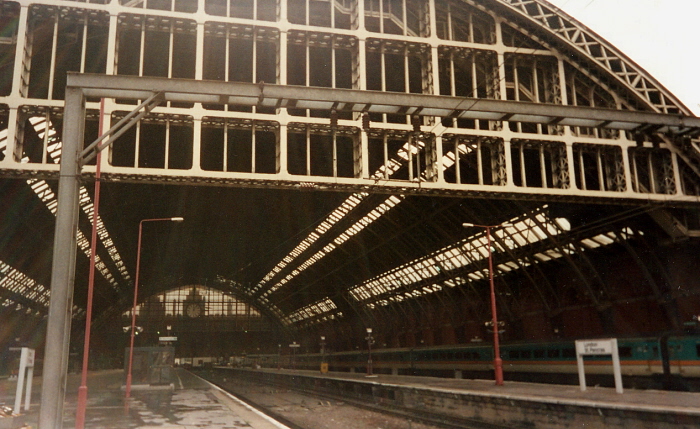
It was in 1996 that the ‘’Channel Tunnel Rail Link Act’’ was passed by Parliament, which, in short, had confirmed St Pancras as the country’s main international station. It was to supersede Waterloo International, of which Eurostar services had only just commenced from in November 1994, and extensive works would be required to adapt the station for its new role. Whilst the long process of finalising the CTRL plans was underway, and the first layers of soil were turned in East London and Kent, St Pancras remained its usual self. Slack operation made sure the terminus retained its ‘’sleepy’’ ethos, but the proposed plans would also deprive the station of any post-1996 enhancements. Previously, on 1st April 1994, British Rail's infrastructure came under the auspices of ''Railtrack'', and this company was subsequently floated on the London Stock Exchange on 20th May 1996. Unusually, St Pancras remained excluded from Railtrack ownership. Rather, during the 1996 privatisation, it became an asset of ''London & Continental Railways'' (L&CR: Eurostar holding company), the organisation of which had won the £3000 million contract to build and operate the CTRL. Until 28th April of that year, the services out of the terminus were operated by InterCity; in its last two years of existence, the Business Sector had been run as a shadow-franchise, this then being bid for by a private consortium.
In 2000, most London termini received new name boards, complete with dedicated logos assigned to each (for example, a lion for Waterloo). St Pancras retained the plain white British Rail examples with black lettering, in light of its ever-diminishing time as a domestic station, in addition to not being under Railtrack ownership (Blackfriars also remains an anomaly by not receiving the new name boards). The platform lampposts remained in InterCity red and no effort was made to repaint, re-tile, or re-glaze the trainshed – this was, instead, all included within the CTRL specification.
Over the weekend of 20th and 21st October 2001, the overhead wires which fed the terminus were dismantled. These had been little used since the opening of Snow Hill Tunnel in May 1988, Bedford electric services continuing onto Gatwick Airport and Brighton. The following weekend, the frames of the huge gasholders to the north east of the trainshed were dismantled; three of these were of Victorian heritage and for posterity, are pending re-erection elsewhere. At the end of 2003, the erection of an ultimately crude structure at the north eastern end of the awe-inspiring Barlow trainshed, began. This was nicknamed ‘’St Pancras Interim’’ and would provide four platform faces for both HST services to and from the Midlands, and terminating ‘’Thameslink’’ services from Bedford. The interim structure officially came into use on Monday 12th April 2004, the last services having departed the original trainshed the previous day. The new structure was exceedingly basic and did an injustice to the Victorian masterpiece which loomed up behind it. Sadly, it marked things to come, and the uninspiring flat-roofed design was to be perpetuated across the whole of the trainshed façade, and then extended northwards for a further 200 metres to provide full coverage for the twenty-vehicle long Eurostar formations and thirteen platforms.
The original station was scheduled to open in its international form on 14th November 2007. When this did indeed occur, the ownership of Waterloo International transferred from L&CR to the government, in exchange for the new depot at Temple Mills. Like the hotel was in the 1960s, the long-standing ‘’St Pancras’’ station had come under threat. Whilst retention of the original name, or a slight change to ‘’St Pancras International’’, would have seemed the most likely and indeed, a logical course of action, Eurostar had been considering other alternatives. Suggestions such as ‘’London Central’’, ‘’London Grand Central’’, ‘’London International’’, and finally, ‘’Union Station’’, had all come to light. However, strictly speaking, the station is neither central to London, nor will the operation be a ‘’union’’ one, there being only a single operator within the international section. Eurostar’s decision to consider a name change was allegedly to increase the understanding of the station’s location among continental travellers. However, ‘’St Pancras’’ is not a name which a traveller is likely to confuse with anything else.

It was decided to tie in the redevelopment of St Pancras & Kings Cross joint underground station with the CTRL works, which explains why the large taxi ramp was boarded off in this view from 4th July 2001. Begun in 2000, the project aimed to increase the circulating area underground and provide two new ticket halls. In order to do this, the taxi ramps in front of St Pancras had to be excavated, but the original red brick Grade 1 listed walls were supported temporarily with metal rods, pending reconstruction and restoration of this area. © David Glasspool

HST power car No. 43056 is observed at the terminus, wearing the unusual Teal and Tangerine "Midland Mainline" livery introduced in February 1997. The locomotive was outshopped in revised Midland Mainline colours in January 2004, and later transferred to operator GNER in 2006 for use on the East Coast Main Line. © David Glasspool

In the background can be seen the silhouette of the former Midland Grand Hotel. The trainshed's northern façade had for long lacked glazing, and even that at the southern end was Perspex. The apex of the trainshed could be reached via staircases at the northern end of the trainshed - one of these can be seen on the right, behind the façade's framework, following the roof line. © David Glasspool
Return to the Kent Rail Homepage or alternatively, check for Updates.
Website & Copyright information - Links - Contact the Webmaster